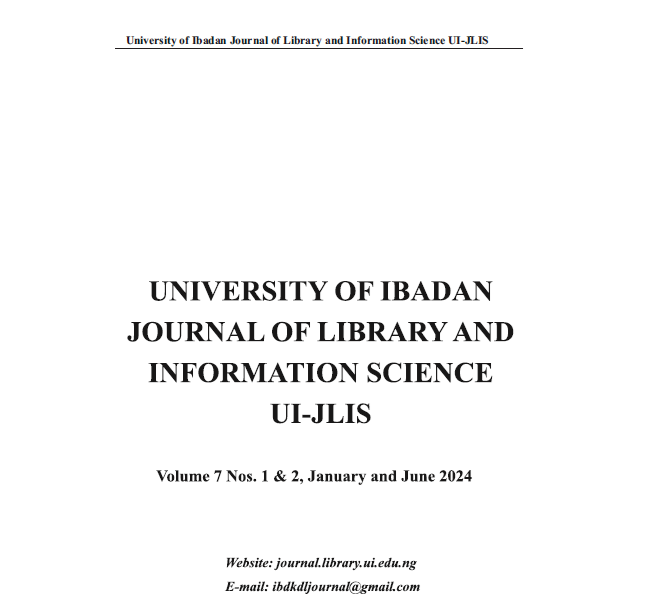A Descriptive Analysis of Management of Electronic Information Resources in Nigerian Public and Private University Libraries
Abstract
University libraries all over the world are facing the challenge of the paradigm shift
from the traditional environment to the electronic environment. In the electronic
environment, these libraries are expected to provide information resources in a
variety of formats and provide innovative services to their users. They are also
expected to provide e-resources in abundance to meet theever-increasing demands of
users. This study examined the management of electronic information resources in
selected public and private universities in Ogun State, Nigeria. The study adopted a
survey research design. A self-designed questionnaire was used to gather data from
the respondents. The purposive sampling method was used to select the two stateowned
and three private universities namely: Olabisi Onabanjo University, Ago-Iwoye,
Tai Solarin University of Education, Ijagun, Bells University of Technology, Ota,
Babcock University, Ilishan, and Covenant University, Ota.The total enumeration
technique was used to collect data for this study, hence, all the seventy-two (72)
librarians from all the institutions sampled formed the respondents for this study. A
total number of 72 copies of the questionnaire were administeredto the respondents
while 64 which represented 88.8% were retrieved and found useful for the analysis.
Findings revealed that EIR are available in all the academic libraries studied, the study
also found that the libraries had plans and policies for the management of EIR.The
study revealed that the management of EIRis faced with numerous challenges,
especially the inadequacy of required information and communication technology
skills by the librarians. The study concluded that electronic information resources
such as electronic books, journals, theses and dissertations, bibliographic databases,
citation databases, digital collections andmeta-resources were the available EIR in
selected university libraries studied. There was a lack of adequate knowledgeof
different library management application software. Technological obsolescence was a
major challenge identi

